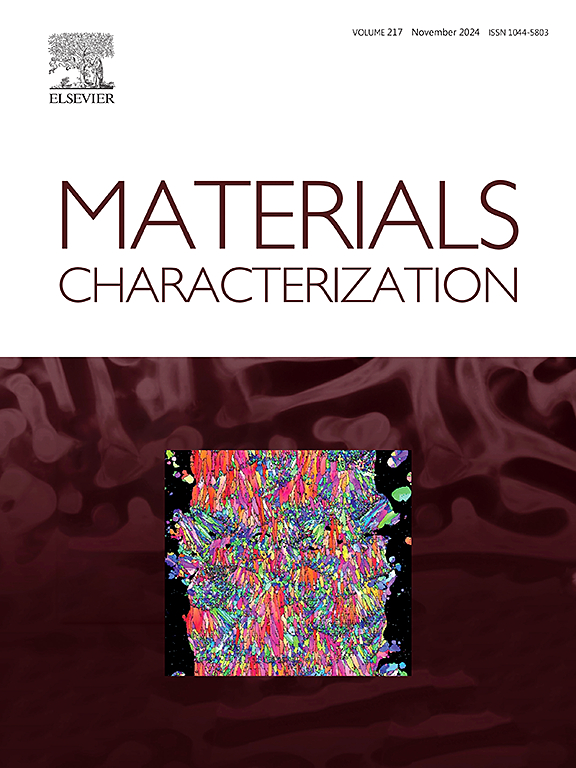Effect of temperature on microstructure and mechanical properties of Ti/steel bimetallic composite component fabricated by hot compression bonding
IF 4.8
2区 材料科学
Q1 MATERIALS SCIENCE, CHARACTERIZATION & TESTING
引用次数: 0
Abstract
The objective of this study is to develop a hot compression bonding (HCB) process for Ti/steel bimetallic composite component in solid-state. The influence of temperature (800–1000 °C) on interfacial reaction, microstructure and tensile property of Ti/steel composites were investigated and the mechanisms were clarified. The results indicate the composite exhibited the highest ultimate tensile strength (UTS) of 489 MPa bonded at 850 °C (below α-β transition temperature), which is equivalent to 82 % of steel matrix and 100 % of titanium matrix. When the bonding temperature is above α-β transition temperature, the UTS achieved the highest 523 MPa at 1000 °C (equivalent to 86 % of steel matrix and 97 % of titanium matrix). The variation of tensile properties with increase of temperature is mainly due to the difference in interfacial intermetallic compounds (IMCs). Therefore, the phase formation and distribution under different temperature were systematically investigated. Theoretically, the formation sequence of the reaction phase is determined by the Gibbs free energy of the IMCs. The result shows the sequence is TiC > Fe2Ti > FeTi all the time, suggesting TiC always initially forms at the interface.

温度对热压结合制备Ti/钢双金属复合构件组织和力学性能的影响
本研究的目的是开发一种固态Ti/钢双金属复合材料构件的热压缩键合(HCB)工艺。研究了温度(800 ~ 1000℃)对Ti/钢复合材料界面反应、显微组织和拉伸性能的影响,并阐明了其作用机理。结果表明,在850℃(低于α-β转变温度)下,复合材料的最高抗拉强度为489 MPa,相当于82%的钢基体和100%的钛基体。当结合温度高于α-β转变温度时,在1000℃时,UTS达到最高的523 MPa(相当于钢基体的86%和钛基体的97%)。拉伸性能随温度升高而变化的主要原因是界面金属间化合物(IMCs)的不同。因此,系统地研究了不同温度下相的形成和分布。从理论上讲,反应相的形成顺序是由IMCs的吉布斯自由能决定的。结果表明:序列为TiC >;Fe2Ti祝辞FeTi始终存在,表明TiC总是在界面处初始形成。
本文章由计算机程序翻译,如有差异,请以英文原文为准。
求助全文
约1分钟内获得全文
求助全文
来源期刊

Materials Characterization
工程技术-材料科学:表征与测试
CiteScore
7.60
自引率
8.50%
发文量
746
审稿时长
36 days
期刊介绍:
Materials Characterization features original articles and state-of-the-art reviews on theoretical and practical aspects of the structure and behaviour of materials.
The Journal focuses on all characterization techniques, including all forms of microscopy (light, electron, acoustic, etc.,) and analysis (especially microanalysis and surface analytical techniques). Developments in both this wide range of techniques and their application to the quantification of the microstructure of materials are essential facets of the Journal.
The Journal provides the Materials Scientist/Engineer with up-to-date information on many types of materials with an underlying theme of explaining the behavior of materials using novel approaches. Materials covered by the journal include:
Metals & Alloys
Ceramics
Nanomaterials
Biomedical materials
Optical materials
Composites
Natural Materials.
 求助内容:
求助内容: 应助结果提醒方式:
应助结果提醒方式:


